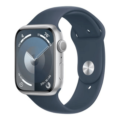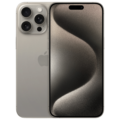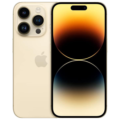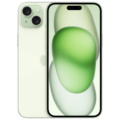- Home
- Apple Devices
- Apple iPhone
- Apple iPhone SE (2nd Generation) Specifications
Apple iPhone SE (2nd Generation) Specifications

SPECIFICATIONS
General
| Status | Available |
| Announced | April 15, 2020 |
| Released | 24 April, 2025 |
| Model |
ALL VERSIONS A2296 A2275 A2298 Versions: A2296 (Global market) A2275 (USA, Canada, Puerto Rico, U.S. Virgin Islands) A2298 (China) Also known as Apple iPhone SE2, Apple iPhone SE (2nd generation) |
| Price Apple iPhone Price in USA, UK, Canada, Australia, India, Pakistan, China, Japan and Europe |
64GB 128GB 256GB $ 250 $ 449.00 $ 549.00 |
Network
| Technology | GSM / CDMA / HSPA / EVDO / LTE |
| 2G Network |
GSM 850 / 900 / 1800 / 1900 CDMA 800 / 1900 |
| 3G Network |
HSDPA 850 / 900 / 1700(AWS) / 1900 / 2100 CDMA2000 1xEV-DO |
| 4G Network |
1, 2, 3, 4, 5, 7, 8, 11, 12, 13, 17, 18, 19, 20, 21, 25, 26, 28, 29, 30, 32, 34, 38, 39, 40, 41, 42, 46, 48, 66 - A2296 1, 2, 3, 4, 5, 7, 8, 12, 13, 14, 17, 18, 19, 20, 25, 26, 29, 30, 34, 38, 39, 40, 41, 42, 46, 48, 66, 71 - A2275, A2298 |
| Speed | HSPA 42.2/5.76 Mbps, LTE-A (5CA) Cat16 1024/150 Mbps, EV-DO Rev.A 3.1 Mbps |
| GPRS GPRS (General Packet Radio Service) is a packet oriented mobile data service on the 2G and 3G cellular communication system's global system for mobile communications (GSM), Generally, GPRS is used for the purpose of wireless data transfer, such as sharing pictures and videos or browsing the Internet via a mobile phone connection. | |
| EDGE EDGE (Enhanced Data GSM Environment) is a wireless network technology generally considered the next step in the 2G network offers data transfer rates up to four times faster than ordinary GSM networks, Generally, EDGE is used for the purpose of wireless data transfer, such as sharing pictures and videos or browsing the Internet via a mobile phone connection. |
Body
| Dimensions | 138.4 x 67.3 x 7.3 mm (5.45 x 2.65 x 0.29 in) |
| Weight | 148 g (5.22 oz) |
| Colors |
Black White (PRODUCT)RED |
| SIM SIM (Subscriber Identity Module) is a small card that contains mobile network subscriber's account information. This allows the phone using the card to attach to a mobile network. The SIM card is most commonly associated with GSM and UMTS mobile networks. Moving a SIM card from one phone to another allows a subscriber to switch mobile phones without having to contact their mobile network carrier. SIM cards can also be used by a phone to store limited amounts of data, such as phone numbers and text messages. | Nano-SIM and/or eSIM |
Body
| Dimensions | 138.4 x 67.3 x 7.3 mm (5.45 x 2.65 x 0.29 in) |
| Weight | 148 g (5.22 oz) |
| Colors |
Black White (PRODUCT)RED |
| SIM SIM (Subscriber Identity Module) is a small card that contains mobile network subscriber's account information. This allows the phone using the card to attach to a mobile network. The SIM card is most commonly associated with GSM and UMTS mobile networks. Moving a SIM card from one phone to another allows a subscriber to switch mobile phones without having to contact their mobile network carrier. SIM cards can also be used by a phone to store limited amounts of data, such as phone numbers and text messages. | Nano-SIM and/or eSIM |
Display
| Display Type Display Technology => A number of display technologies and types used in mobile phones => TFT (Thin Film Transistor), IPS (In-Place Switching), OLED (Organic Light Emitting Diode), AMOLED (Active-Matrix Organic Light-Emitting Diode), Super AMOLED (an even advanced version of AMOLED), Resistive Touchscreen (Resistive touchscreens contain two layer of conductive material with a very small gap between them which acts as a resistance), Capacitive Touchsceen (Capacitive touchscreen technology consists of a layer of glass coated with a transparent conductor) | Retina IPS LCD, 625 nits (typ) |
| Size | 4.7 inches, 60.9 cm2 (~65.4% screen-to-body ratio) |
| Display Colors Display Colors is refers to the number of different shades of colors that the screen is capable of displaying => 64K colors, 256K colors and 16 million colors, Obviously 16M is highest available range of colors and better than others. | Wide color display (P3) |
| Resolution | 750 x 1334 pixels, 16:9 ratio (~326 ppi density) |
| Pixel Density Pixel Density (PPI) is refers to the concentration of pixels on a particular display, measured in pixels per inch (ppi). Pixel density is calculated by dividing the diagonal pixel resolution of a display by its diagonal size, higher pixel density better display quality. | ~326 ppi |
| Touch Screen | True-tone |
| Display Protection Display Protection => Gorilla Glass is a special alkali-aluminosilicate glass shield with exceptional damage resistance that helps protect mobile displays from scratches, drops, and bumps of everyday use, It is always better to go for a smartphone with Gorilla Glass for that added protection and peace of mind. | Ion-strengthened glass, oleophobic coating |
| Multitouch |
Camera
| Primary Camera is able to capture photographs and usually videos, The most important characteristics of a camera are the resolution (measured in megapixels), lens focus type (fixed or automatic), higher megapixel cameras are known to capture higher quality photos, but not always a good measurement of the photos quality. | 12 MP, f/1.8 (wide), PDAF, OIS |
| Video | 1080p@30fps; gyro-EIS |
| Camera Features |
FaceTime HD camera ƒ/2.2 aperture Retina Flash Auto HDR for photos Portrait mode with advanced bokeh and Depth Control Portrait Lighting with six effects (Natural, Studio, Contour, Stage, Stage Mono, High-Key Mono) 1080p HD video recording at 25 fps or 30 fps Cinematic video stabilization (1080p and 720p) QuickTake video |
| Selfie Camera |
7 MP, f/2.2 |
| Video | 1080p@30fps; gyro-EIS |
| Camera Features |
FaceTime HD camera ƒ/2.2 aperture Retina Flash Auto HDR for photos Portrait mode with advanced bokeh and Depth Control Portrait Lighting with six effects (Natural, Studio, Contour, Stage, Stage Mono, High-Key Mono) 1080p HD video recording at 25 fps or 30 fps Cinematic video stabilization (1080p and 720p) QuickTake video |
Software
| Operating System OS => Every computer system run on a base software called Operating System (OS). Operating System controls all basic operations of the computer (such as smartphone, PDAs, tablet computers and other handheld devices). The Operating System allows the user to install and run third party applications (apps), apps are used to add new functionality to the device. | iOS 13, up to iOS 15.5, planned upgrade to iOS 16 |
| Browser (Default) | Safari |
Hardware
| Chipset Chipset is a group of integrated circuits designed to perform one or a more dedicated functions, often with real time computing constraints, Popular smartphones are equipped with more advanced embedded chipsets that can do many different tasks depending on their programming. | Apple A13 Bionic (7 nm+) |
| CPU CPU (Central Processing Unit) mostly known as processors, CPU processes instructions in order to carry out certain functions that make your device operate properly. Processors are often described as the brain of computers, smartphones and tablets, Smartphones and tablets rely on processors to carry out their every task, Processors are an incredibly important factor in selecting any type of computing device, including your smartphone. | Hexa-core (2x2.65 GHz Lightning + 4x1.8 GHz Thunder) |
| GPU GPU (Graphics Processing Unit) is a single-chip processor designed to rapidly manipulate and alter memory to accelerate the creation of images in a frame buffer intended for output to a display, This includes things such as lighting effects, object transformations, and 3D motion. | Apple GPU (4-core graphics) |
| RAM (Memory) RAM (Random Access Memory) is a type of computer memory that can be accessed randomly, any byte of memory can be accessed without touching the preceding bytes that allows information to be stored and accessed quickly from random locations. RAM is the most common type of memory found in computer systems, smartphones, tablets and other electronic devices. | 3 GB |
| Internal Storage Internal Storage is a data storage space (flash memory) mostly used in smartphones, tablets and other electronic devices where operating system, apps, music, photos, videos, files and other user data Is stored. | 64GB, 128GB, 256GB (NVMe) |
| Card Slot Memory Card Slot is a special slot for inserting a memory card. Memory cards allow you to expand the phone's built-in memory, A memory card (sometimes called a flash memory card or a storage card) is a small storage medium used to store data such as text, pictures, audio, and video, for use on small, portable or remote computing devices such as mobile phones, mp3 players, digital cameras. | No |
| Sensors Sensors are electronic components that detects and responds to some type of input from the physical environment. The specific input could be light, heat, motion, moisture, pressure and location, The output is generally a signal that is converted to use in computing systems, a location sensor, such as a GPS receiver is able to detect current location of your electronic device. | Fingerprint (front-mounted), accelerometer, proximity, gyro, compass, barometer |
Battery
| Battery Type Battery Type => Cell phones run on various kinds of batteries depending on the manufacturer, phone size or shape and features. There are basically four types of cell phone batteries => Lithium Polymer, Lithium Ion, Nickel Metal Hydride and Nickel Cadmium. | Li-Ion (6.91 Wh) |
| Capacity Battery Capacity is a measure (typically in Amp-hr) of the charge stored by the battery, and is determined by the mass of active material contained in the battery. The battery capacity represents the maximum amount of energy that can be extracted from the battery under certain conditions. | 1821 mAh |
| Placement | Non-removable |
| Wireless Charging Wireless Charging (Inductive Charging) uses an electromagnetic field to transfer energy between two objects. This is usually done with a charging station. Energy is sent through an inductive coupling to an electrical device, which can then use that energy to charge batteries or run the device. | Qi wireless charging 7.5W |
| Fast Charging | Fast charging 18W, 50% in 30 min (advertised) |
| Standby Standby Time is the total amount of time that you can leave your is fully charged, turned on and ready to send and receive calls or data transmissions before completely discharging the battery. | up to 10 days |
| Talk Time Talk Time is the longest time that a single battery charge will last when you are constantly talking on the phone under perfect conditions, Ambient temperature and highly dependent on the cellular network environment such as the distance to the closest cell network tower. | 14 hours of talk time |
| Audio Playback | Up to 40 hours |
| Video Playback | Up to 13 hours |
| Internet Usage | 12 hours |
Media
| Alert Types |
Vibration, proprietary ringtones |
| Loudspeaker | Yes, with stereo speakers |
| 3.5mm Jack | |
| FM Radio | NO |
| Features | Active noise cancellation with dedicated mic |
Connectivity
| Bluetooth Bluetooth is a wireless communications technology for exchanging data between mobile phones, headsets, computers and other network devices over short distances without wires, Bluetooth technology was primarily designed to support simple wireless networking of personal consumer devices. | 5.0, A2DP, LE |
| Infrared Infrared connectivity is an old wireless technology used to connect two electronic devices. It uses a beam of infrared light to transmit information and so requires direct line of sight and operates only at close range. | |
| Wi-fi Wi-Fi is a popular wireless networking technology using radio waves to provide high-speed network connections that allows devices to communicate without cords or cables, Wi-Fi is increasingly becoming the preferred mode of internet connectivity all over the world. | Wi-Fi 802.11 a/b/g/n/ac/6, dual-band, hotspot |
| Wi-fi Hotspot | |
| USB | Lightning, USB 2.0 |
| GPS GPS The Global Positioning System is a satellite-based radio navigation system, GPS permits users to determine their position, velocity and the time 24 hours a day, in all weather, anywhere in the world, In order to locate your position, your device or GPS receiver must have a clear view of the sky. | Yes, with A-GPS, GLONASS |
| NFC NFC (Near field communication) is a set of standards for smartphones and similar devices to establish peer-to-peer radio communications with each other by touching them together or bringing them into proximity, usually no more than a few inches. |
MISC
Description
Released on April 24, 2020, the Apple iPhone SE (2nd Generation) Specs combine modern technology with a classic design, offering impressive performance at a more accessible price point.
Despite its compact size and budget-friendly nature, the iPhone SE packs a punch with cutting-edge features like the A13 Bionic chip, advanced camera capabilities, and wireless charging support.
If you’re looking for a compact yet powerful iPhone, the iPhone SE (2020) is worth considering.
Table of Contents
Key Specifications of the Apple iPhone SE (2nd Generation)
Design and Build

The iPhone SE (2nd Generation) specs follow a familiar design language seen in earlier iPhone models, notably the iPhone 8, with its glass front and back, coupled with an aluminum frame.
It weighs just 148 grams and has a slim 7.3mm thickness, making it comfortable to hold and easy to carry. This compact design with a 4.7-inch Retina IPS LCD is perfect for users who prefer a smaller phone that still packs a lot of power.
- Dimensions: 138.4 x 67.3 x 7.3 mm
- Weight: 148 g
- Build: Glass front, glass back, aluminum frame
- IP67 Rating: Dust and water-resistant (up to 1 m for 30 minutes)
Apple iPhone SE (2nd Generation) Display
The iPhone SE (2020) specs feature a 4.7-inch Retina IPS LCD, delivering sharp visuals and vibrant colors. While it might not be as expensive as the displays on other iPhone models, it still offers 625 units of brightness, making it great for outdoor visibility.
The 750 x 1334 pixels resolution gives a crisp display, with a 326 ppi density, ensuring every image and text is clear and easy to read.
- Type: Retina IPS LCD
- Resolution: 750 x 1334 pixels (~326 ppi density)
- Brightness: 625 nits
- Protection: Ion-strengthened glass for durability
Performance

The best feature of the iPhone SE (2020) is the A13 Bionic chip, the same chip found in the iPhone 11 series. With this powerful chip, the SE delivers top-tier performance for all kinds of tasks, from gaming to productivity apps. Whether you are multitasking or running demanding apps, the A13 Bionic ensures your experience is smooth and fast.
- Chipset: Apple A13 Bionic (7nm+)
- CPU: Hexa-core (2×2.65 GHz Lightning + 4×1.8 GHz Thunder)
- GPU: Apple GPU (4-core graphics)
- RAM: 3GB
- Storage Options: 64GB, 128GB, 256GB (no microSD card slot)
Apple iPhone SE (2nd Generation) Camera

The iPhone SE (2020) packs a 12MP rear camera with an f/1.8 lens, delivering excellent photos with ironic and vibrant colors. It supports Portrait Mode, Smart HDR, and 4K video recording at 24/30/60 fps. For selfies, the 7MP front camera offers sharp and bright pictures, with HDR support and 1080p video recording at 30fps.
- Main Camera: 12 MP, f/1.8 (wide), PDAF, OIS
- Features: Quad-LED dual-tone flash, HDR, Panorama
- Video: 4K at 24/30/60fps, 1080p at 30/60/120/240 fps
- Selfie Camera: 7 MP, f/2.2, HDR, 1080p video at 30fps
Battery and Charging

The iPhone SE (2020) houses a 1821 mAh battery, which might seem small compared to some larger iPhones, but it still delivers excellent performance. With the power-efficient A13 Bionic chip and optimizations in iOS, you can expect a solid battery life throughout the day.
The device also supports 18W fast charging, which allows you to charge up to 50% in just 30 minutes. Additionally, it supports 7.5W wireless charging using Qi-compatible chargers.
- Battery Type: Li-Ion 1821 mAh, non-removable
- Fast Charging: 18W wired, 50% in 30 minutes
- Wireless Charging: 7.5W (Qi standard)
Software and Features
The iPhone SE runs iOS 13 out of the box but is upgradable to iOS 18.1. With iOS 18.1, users can take advantage of the latest features, performance improvements, and security updates. The phone also comes with a Touch ID for secure unlocking, payments, and app authentication. As for connectivity, it supports Wi-Fi 6, Bluetooth 5.0, and NFC and has Apple Pay for easy and secure transactions.
- OS: iOS 13, upgradable to iOS 18.1
- Sensors: Fingerprint (front-mounted), accelerometer, proximity, gyro, compass, barometer
- Connectivity: Wi-Fi 802.11 a/b/g/n/ac/6, Bluetooth 5.0, NFC, Lightning port
Colors and Pricing
The iPhone SE (2020) specs are available in three attractive colors:
- Black
- White
- (PRODUCT)RED
It’s priced competitively, offering high-end performance at a budget-friendly cost, making it one of the best value-for-money options in the iPhone lineup.
Price: $120.00 (approx. €116.08 / £96.50)
Conclusion
The iPhone SE (2nd Generation) specs offer an incredible balance of performance and price. With its powerful A13 Bionic chip, 12MP camera, and 4.7-inch Retina display, it’s an ideal choice for users who prefer a smaller form factor but don’t want to compromise on performance. The iPhone SE provides a flagship experience at a fraction of the price of other premium models, making it perfect for those on a budget but still wanting a top-notch iPhone experience.
Read the Complete Review of the Apple iPhone SE (2nd Generation)














